When Should Wisdom Teeth Come In?
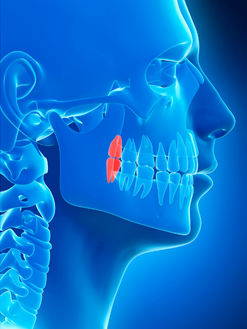

Wisdom teeth are the third set of molars that come in during late adolescence or early adulthood. For some people, they come in without any problems at all. But for others, they can cause pain, swelling, and even infection that require the skill of dentists and orthodontists to help them. Below we discuss some of the most common questions such as: When do wisdom teeth come in? How do I know if my wisdom teeth need to be removed?
1. When Do Wisdom Teeth Come In?
Most people have four wisdom teeth, which usually come in during the late teenage years or early twenties. However, it’s not unusual for some people to have fewer than four or more than four. Wisdom teeth can also come in at different times for different people. When your wisdom teeth start to make their appearance, they may start pushing through your gums at different stages. You may have one wisdom tooth that comes in first and causes you no problems, while another wisdom tooth may come in later and cause you pain. In some cases, wisdom teeth may not come in at all.
2. Do All Wisdom Teeth Need To Be Removed?
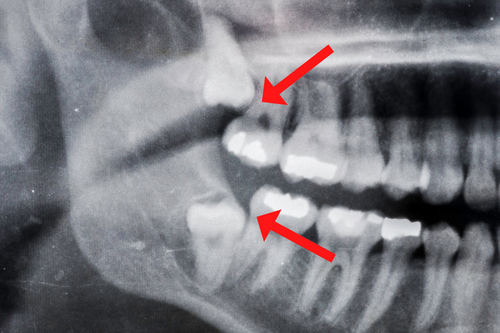
No, not all wisdom teeth need to be removed. Sometimes, the wisdom tooth may come in properly and not cause any problems. However, if the wisdom tooth does not come in correctly, it can crowd or damage other teeth, which may require removal. Impacted teeth do not have enough room to come in or grow properly. Partially erupted teeth have broken through the gum but become stuck because they do not have enough room to fully come in.
Often your teeth can be adjusted with braces, helping free up some space for your wisdom teeth to fully push through into place. You may want to consider searching for something like an affordable orthodontist near me or braces cost. Braces will help move your teeth into the proper position so wisdom teeth can come in more easily.
3. How Do You Know If I Need My Wisdom Teeth Out?
If your wisdom teeth are impacted, it means they’re stuck and can’t come in. This can happen when there’s not enough room in your mouth for them to grow. Impacted wisdom teeth can cause problems like pain, infection, and damage to other teeth. If you have impacted wisdom teeth, your dentist or orthodontist will usually recommend removing them before or after the treatment of braces. They may also recommend removing wisdom teeth that are not impacted but are likely to cause problems in the future. You can also request a braces payment plan to make the process more affordable.
4. Why Can’t I Leave My Wisdom Teeth Alone?
If you have wisdom teeth that are impacted or growing in at an angle, they can put pressure on your other teeth and cause problems. They can also crowd your mouth and make it difficult to brush and floss properly, leading to tooth decay and gum disease. Additionally, if your wisdom teeth become infected, they can cause pain and swelling. If you have any of these problems, your dentist may recommend removing your wisdom teeth.
If you are experiencing pain or other problems with your wisdom teeth, see your dentist or orthodontist to discuss treatment options. You may also want to consider getting braces to help ensure that your wisdom teeth come in correctly. Request an appointment online with us at Smile First Pediatric Dentistry or call (631) 563-7462 to speak to a team member about booking your appointment!
The Importance of Flossing for Kids
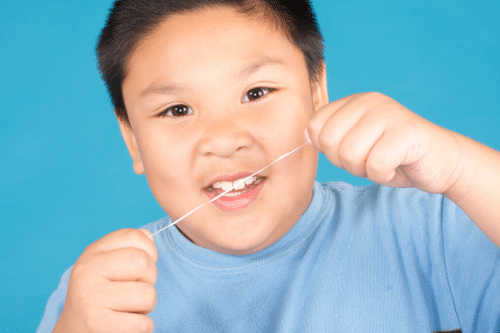

Flossing your child’s teeth is important as long as they have two teeth that touch. In most cases, this will be between the ages of 2 to 3. Flossing helps you reach the parts of your kid’s teeth that a toothbrush can’t reach. It also helps eliminate plaque buildup, thus preventing gum disease and tooth decay.
Observing the best oral health habits with your kid can help strengthen their teeth and gum line. Over time, your kid can learn how to brush and floss their teeth by themselves. Read on to learn about the top benefits of flossing.
Prevents Gum Disease
One sign of gum disease is inflammation around the gums. Your kid’s gums can also bleed when you floss or brush their teeth. If not treated, your kid can end up with a more severe infection that can cause the gums to pull away from their teeth. Brushing your child’s teeth twice a day and flossing them once a day can help reduce the risk of gum disease. Besides, it’s advisable to frequently take them for professional cleanings to a pediatric dentist to keep their gums healthy.
Can Help Prevent Heart Disease
Research shows that flossing benefits extend beyond the teeth and gums. Flossing can play a crucial bit in preventing heart disease. One of the least severe gum diseases is gingivitis, which has symptoms like irritation, swelling, and redness of the gums. If untreated, it can become periodontitis, leading to tooth loss. It can also increase the risk of a stroke or heart attack. That’s because the bacteria from your tooth rot can enter your bloodstream and travel to other body parts.
Helps Prevent Tooth Decay
Tooth decay can lead to cavities that create a tiny hole or crack on the tooth’s hard surface. Although the decay takes time, the more plaque your child has on their enamel can increase the risk of tooth decay. Flossing between the teeth daily can eliminate any hidden foods and plaque buildup, thus reducing the chances of tooth decay.
Improves Tooth Appearance
There is always a correlation between your child’s self-confidence and their smile. Having a great smile can help them get along with other kids or make amazing first impressions. Flossing can help prevent bad breath and give your kid a great teeth appearance. In return, they can keep their smile for a long time.
Keeps You From Seeing the Dentist More Than Necessary
Gum disease, tooth decay, or overwhelming plaque can lead to frequent dentist visits. To avoid all this, it’s advisable to practice brushing twice a day and flossing once a day. With clean teeth, your kid will only require visiting the dentist after six months for professional cleaning.
The best thing about flossing is that it’s never too late to begin. Besides, you can let your child pick the flavor they prefer, thus making the process fun. Also, remember to focus on establishing a routine by finding a time that works for your child.
Ready to find a pediatric dentistry near you? Our dentist or hygienist at Smile First Pediatric Dentistry can discuss the importance of flossing with your child while your child attends regular dental checkup. Our friendly staff are happy to assist you in scheduling an appointment. Contact our office to make an appointment or call us at (631) 563 – 7462.
Why Choose A Pediatric Dentist for Your Kids?
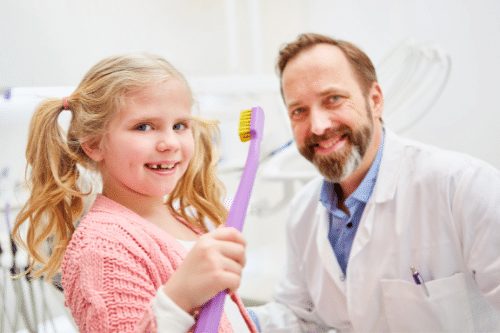
Going to dentists can be scary for little ones! However, taking them to a kids only dentist is important for their overall health and wellbeing. It is very important to teach the kids the significance of oral hygiene. With time they can develop good dental care habits. Taking children to the dentist for kids (or pediatric dentist) can establish good oral care habits. Kids form a routine of regular checkups, and can also learn from the dentists about good brushing and flossing techniques. But why should we choose kids only dentists, not regular dentists?
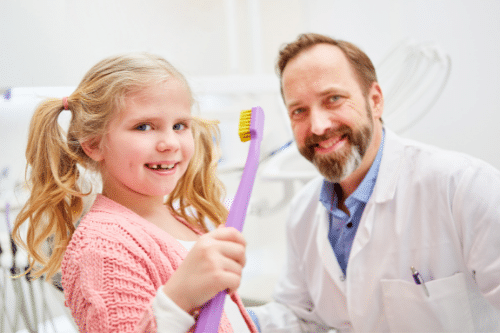
A Kids Only Dentist Is Specially Certified
Kids only dentists have special training for children’s dental care, which makes them the most desirable dentist for kids. They understand the characteristics of the kid’s teeth and have the skill and experience to take care of the kids who are both young and teenagers. Kids only dentists have the education, specialization in pediatric dental techniques and expertise in dealing with children to help them to maintain their oral health.
Pediatric dentists are a good choice because they have seen various types of medical cases and common pediatric conditions. Thus they can give the right kind of diagnosis and advise on the kid’s dental problems. Kids are different from adults and so are their dental health problems. Pediatric dentists can understand them and their problems better.
Providing a Kid Friendly Environment
The Pediatric Dental services have been designed as per the kid’s needs and requirements. The kids only dentist office can provide all the tools, decor, furniture, and other things which will be kid friendly. These small details can put kids at ease and encourage them to visit the dentist’s office. Kids enjoy rewards like small toys, stickers, and little gifts given to them by most dentists.
Better Understanding Of Kids Growth And Oral Health Issues
Dental hygiene and oral care are a vital part of overall physical health. Just like we visit a regular pediatrician for our kids, visiting dentists for kids is also very important. Taking them regularly to the kid’s only dentist’s office will help children understand and develop healthy oral care routines. A pediatric dentist focuses on providing gentle, calm, and kid-focused dental care. As the dentist’s office is kids friendly they utilize special tools that are child-sized, and meant for the kid’s purposes only. These are specialized tools and instruments that are just the right size specifically meant for kids’ mouths.
The kids-only dentists are specially trained for children of all ages from infants, to teenagers and also kids with special needs. As pediatric dentists have treated so many kids’ cases, they have a solid understanding of the dental health problems kids may experience. This enables them to give the right kind of advice for your kid’s oral condition.
Final Note
Kids’ healthy oral habits are very important for their physical well being which makes regular trips to kids’ dentists’ offices very important. Starting early is also recommended roughly when your child is 6 months old. The extensive specialization kids’ dentists go through helps them provide a positive dental experience and good treatment for kids.
It please us at Smile First Pediatric Dentistry to offer that level of treatment! Contact us to set up an appointment or call our office at 631-563-7462. We look forward to helping you keep your child’s smile bright and healthy.
Is Filling Baby Teeth Cavities Really Necessary?
Do Infant Teeth Require Fillings?
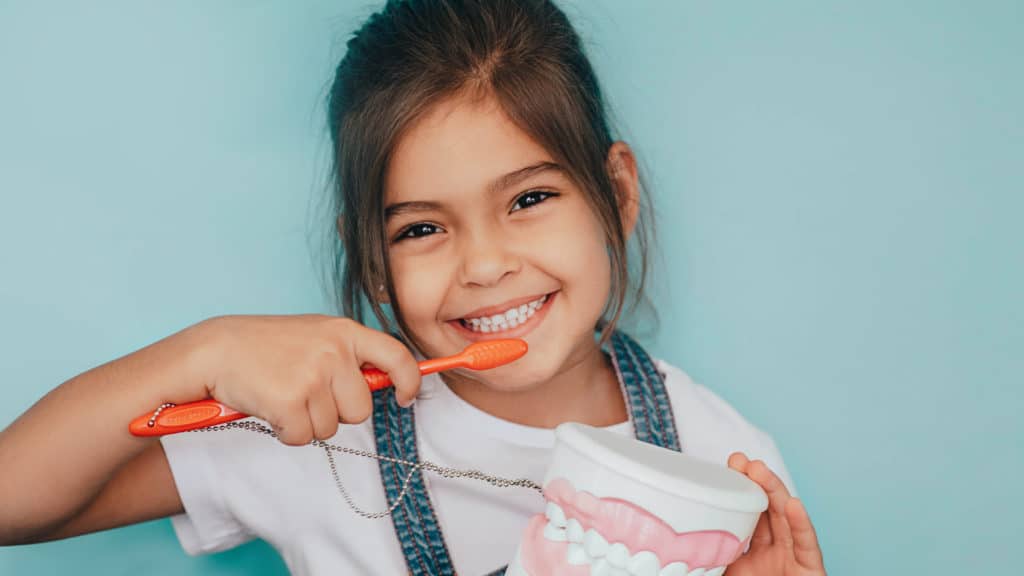
After taking your child to the pediatric dentist, you discover that the little one has a cavity in one of their baby teeth. Parents frequently ask us, “Can’t you just let the cavity go instead of going through all the trouble associated with filling it, since that tooth is just going to fall out anyway?”
It’s possible for tiny cavities to heal themselves through remineralization. If the cavity is detected early on by your pediatric dentist, they can offer you advice on how to take better care of your child’s teeth and possibly stop the cavity from getting worse. This will involve maintaining good dental health and oral hygiene practices.
Do Cavities in Baby Teeth Need to Be Filled?
Next, it might not be required to fill the tooth if the pediatric dentist finds that it is on the verge of falling out. The dentist might advise simply letting the tooth fall out without having it repaired if it appears like your child won’t have it for very long.
According to a 2014 American Academy of Pediatric Dentists study, almost 60% of American children will have some degree of tooth decay by the time they are five years old. According to the same research, if this decay is not treated, it might result in infection, trouble chewing food, and even malnourishment. According to other research, kids with dental decay frequently struggle in school because of the discomfort that comes with the condition.
Dr. Tran agrees that not too long ago, kids didn’t visit the dentist for the first time until they were late toddlers or early preschoolers and had a full mouth of teeth. However, given the ongoing rise in the prevalence of dental caries in children, it is now advised that children see a pediatric dentist by their first birthday. In this manner, we can assist parents in forming healthy dental hygiene practices, provide nutritional guidance, and keep an eye on their teeth so that we may take action before a small issue worsens.
However, why should parents invest the time and money in crowns for teeth that will eventually fall out? Simply said, tooth decay is a disease. It is caused by some bacteria that are easily transmissible and can last a lifetime. Furthermore, the permanent teeth may suffer harm even before they erupt if the baby’s teeth have significant decay.
Does Baby Teeth Need to Have Cavities Filled?
When is a cavity not going to need to be filled?
Let’s discuss the various methods a pediatric dentist can assist your child in reducing the discomfort caused by tooth decay. Baby teeth cavities can be treated in a variety of ways, similar to adult teeth cavities, from dental fillings to extraction of the tooth.
These treatments are primarily intended to keep baby teeth healthy, avoid further issues, and support the healthy growth of permanent teeth.
Dental Fillings:
You may be asking yourself now, is it necessary to fill baby teeth? Yes, is the response!
One of the best treatments for minor cavities is dental fillings. The procedure is straightforward: the dentist will first numb your child’s mouth to make them pain-free before extracting the decayed teeth. The entire infant tooth will then be filled with tooth-colored material.
Extracting Teeth:
Since dental specialists will make every effort to save a small portion of the tooth, this treatment is only performed in extreme instances. Recall that early tooth loss can lead to functional issues, including trouble speaking and chewing, as well as issues with the long-term alignment of their grins.
Pediatric dentists typically utilize local anesthetics to complete the treatment, and because the youngster may be uncomfortable, the recovery period may be prolonged.
Dental Crown:
A dental filling might not be sufficient to address the dental problem when the damage is more extensive. The dentist will advise using a dental crown in this situation. First, the area is made numb, the tooth decay is removed, and the tooth is shaped to fit the dental crown.
We understand that maintaining your child’s smile is of utmost importance to you, thus in order to prevent dental problems like cavities in baby teeth, we advise routine dental checkups and good oral hygiene.
Five Strategies to Get Kids Excited About Looking After Their Teeth

While some kids like brushing and flossing their teeth every night, others may see it as a task they must complete just before their hated bedtime. This might make it challenging for you as a parent not only to encourage them to establish a habit but also to walk the tightrope between not being overly harsh and making them link oral hygiene to negative consequences. Making oral health and dental hygiene entertaining is one of the finest methods to get your youngster interested in both! For everyone’s day to go a bit more smoothly, try these five methods to liven up their brushing and flossing rituals in the morning and at night.

DISNEY MAGIC TIMER APP FROM ORAL-B
The Oral-B Disney Magic Timer, which measures each teeth brushing session and notes when your child is consistent in taking care of their pearly whites, may be quite appealing to them if they enjoy video games or Disney. It makes brushing their teeth enjoyable, is visually appealing, and includes all of their favorite Disney characters!
Select a knowledgeable and kind pediatric dentist.
Pediatric dentists are specialists in the field of oral development and have years of expertise treating children only. As such, they have a wealth of techniques at their disposal to keep young patients interested in their mouth health and involved during treatment.
BRUSH ONE OTHER TO SET A GOOD EXAMPLE
As kids usually copy their parents’ behaviors and characteristics, you may help them develop lifelong healthy habits by including them into your brushing and flossing regimen both at night and in the morning.
QUESTION IF YOUR CHILD WOULD BENEFIT FROM DENTAL SEALANTS
Do your kids brush and floss less frequently than you would like? You can find out from their pediatric dentist if they qualify for dental sealants, a preventive therapy, to reduce their risk of cavities. By erecting a barrier between oral germs and debris that may otherwise become lodged in their molars and cause decay, this quick, painless, and non-invasive procedure can significantly improve their oral health.
Invest in entertaining, kid-friendly oral hygiene products.
Your child may interact with so many fun and interesting oral hygiene products and educational materials these days to get them more enthusiastic about taking care of their smile. Take them down your neighborhood department store’s oral health section and let them select their own toothpaste, flavored dental floss, and toothbrush. They’ll be eager to utilize them because they chose them themselves, for starters.
Braces for Kids: A Comprehensive Guide to What Every Parent Should Know
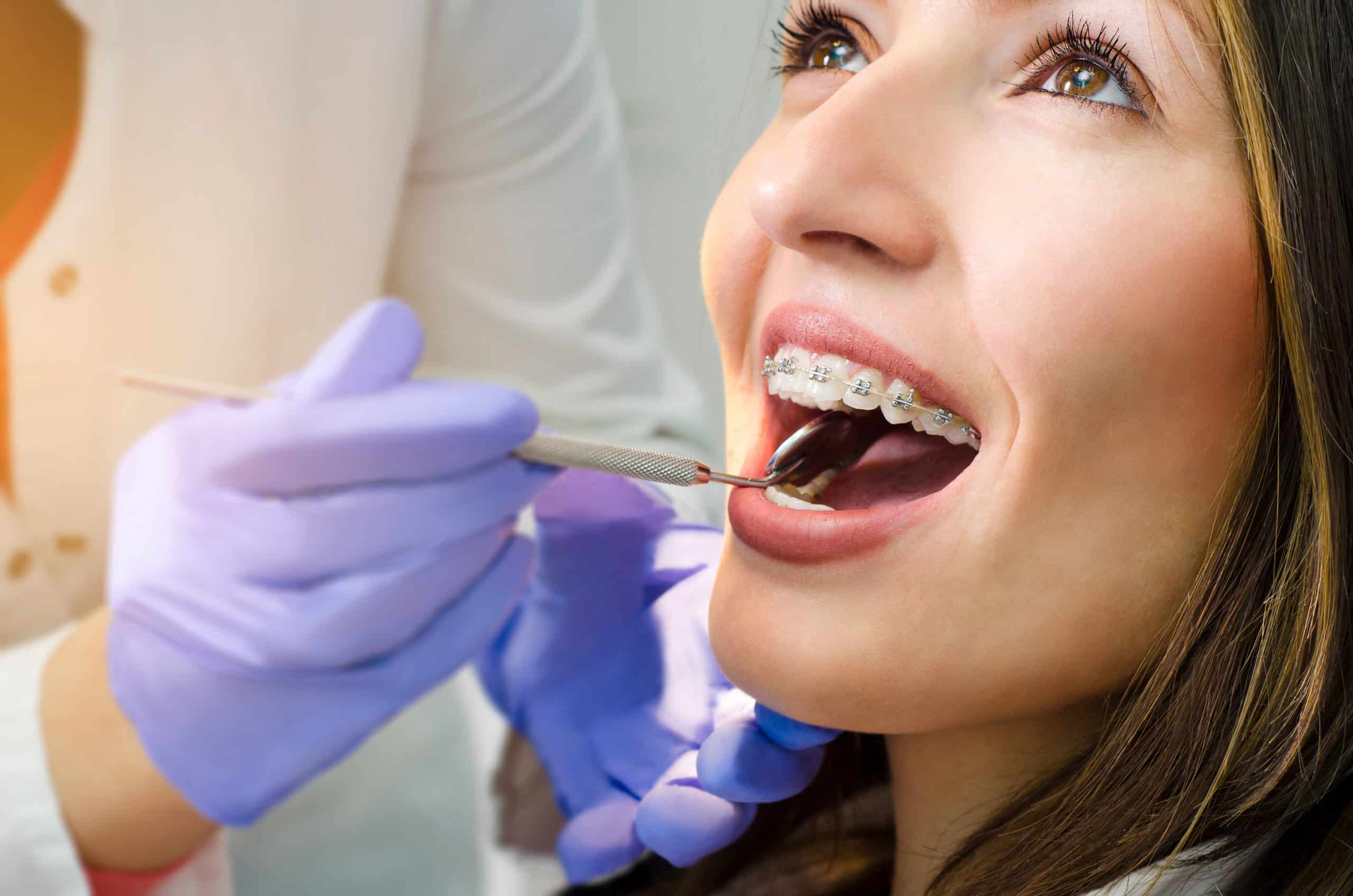
Selecting braces for their kids may be difficult for parents, but it’s a big step toward a beautiful smile. It could be difficult to decide on the appropriate age and kind of braces. This thorough article attempts to demystify the intricacies of pediatric orthodontics and provide a concise road map to enable parents to make wise choices. By concentrating on the fundamentals of braces for children, parents can make sure their child is aware of and ready for orthodontic treatment.
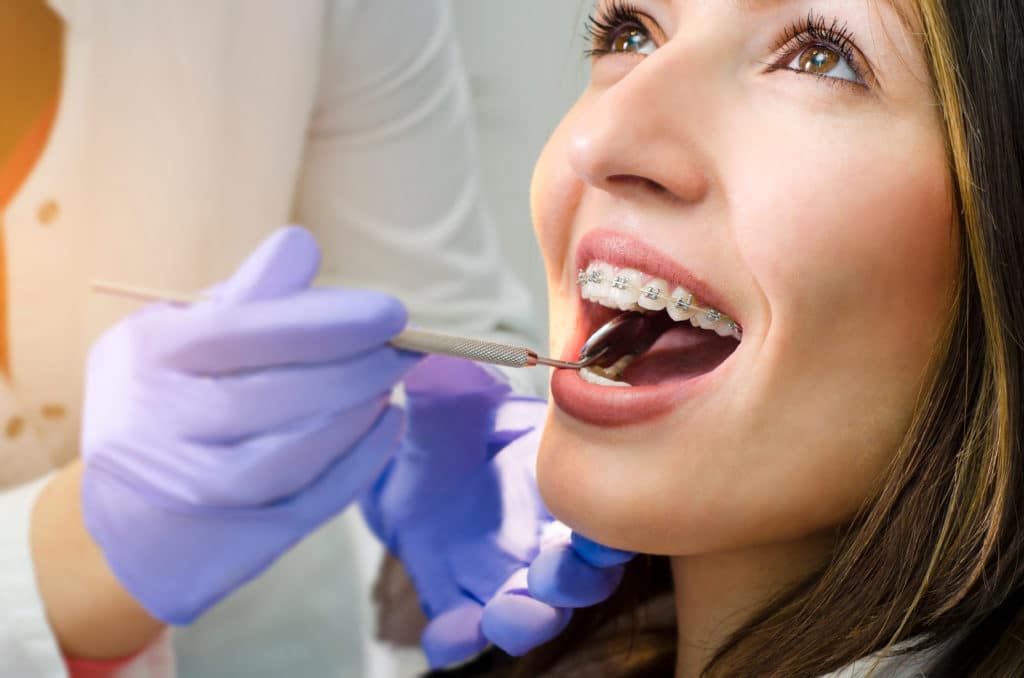
Reasons Children Should Get Braces
For kids, orthodontic therapy has considerably more effects than only cosmetic ones. Let’s explore the many aspects of why a child’s dental health and general health depend heavily on braces.
1.Initial Benefits for Development
Incorrecting problems that might impede a child’s speech development or chewing skills is made possible in large part by braces. Braces help to correct jaw and tooth alignment, which helps to relieve issues such underbites, overbites, and crossbites and lays a solid basis for your child’s dental health as they become older.
2. Preventing Later Dental Problems
Proactively, early orthodontic treatment may help to avoid later, more serious oral issues. Early correction of misalignments may guarantee a better mouth environment for many years by delaying the start of gum disease, tooth decay, and even possible tooth loss.
3. Enhancement of Self-Esteem
Many times, a confident grin is a straight, lovely smile. High self-esteem in children who feel good about their grin seems to improve their social relationships and general pleasure.
4. Better Chewing and Speech
A child’s ability to chew food correctly or talk effectively may be hampered by misaligned teeth or jaw. Effective alignment of the oral structure is facilitated by braces, which also enhance speaking and chewing, two essential skills for a child’s developmental milestones.
Simply said, getting braces for kids is like laying a strong basis for their dental health, which benefits them in many other areas of their lives.
When to Start Orthodontic Evaluations?
Children’s oral health depends heavily on orthodontic evaluations; the American Association of Orthodontists advises that children have their first examination by the age of seven. Early detection and treatment of any problems like spacing difficulties, crowding, and crossbites are possible. Early intervention may make subsequent therapy less involved and maybe less costly. The orthodontist will examine for oral habits that might impede dental growth, as well as bite issues and space management. Should any problems be found, a customized treatment plan can be developed, which might include early intervention therapies or growth pattern monitoring. Every youngster won’t need braces right away, and customized strategies could be required.
Brace Types on the Market
Regarding your child’s teeth straightening, there are seemingly countless orthodontic possibilities. But worry not—we’re here to help you make an educated choice by demystifying the many kinds of braces that are available.
Conventional Metal Brace
The wires are threaded through and metal brackets are affixed to each tooth in these traditional braces. They are quite economical, very successful, and now days they have smaller, more attractive brackets than the big ones in the past.
Braces made of ceramic
With less obvious transparent or tooth-colored brackets, ceramic braces function similarly to metal braces. For youngsters who are worried about how they look, they are a fantastic alternative, but they may be a little more costly than metal braces.
Dual Braces
Because they are fastened to the back of the teeth, these braces are not visible from the front. Highly covert, they might be initially more unpleasant and are often more costly.
With Invisalign or Clear Aligners
A sequence of removable, transparent aligners designed especially for your child’s teeth make up Invisalign. They make an orthodontic experience more pleasant, are almost unnoticeable, and are simple to clean. They are usually more costly, however, and they may not be appropriate for more intricate orthodontic problems.
Braces that Ligate on Their Own
Braces that self-ligate resemble conventional braces but do not need elastics. Rather, they keep the wire in place with a specific clip, which may lessen friction, facilitate cleaning, and maybe shorten the course of therapy.
Selecting the Best Braces for Your Youngster
Your budget, your child’s comfort and preferences, and the intricacy of their orthodontic problems will all play a major role in the braces you choose. Your orthodontist should be consulted in detail as they can direct you toward the best course of action for your child’s particular requirements.
Every kind of brace has benefits and things to think about of its own. Through knowledge of your choices and advice from a reliable orthodontist, you may start down a route that, depending on your child’s unique situation and your family’s budget, results in a brilliant smile.
Kids’ Braces Costs
Many things may affect how much braces cost young children, including the kind of braces, how complicated and long the treatment will take, where they live, and how skilled the orthodontist is. Here we explore the cost of braces for children, giving you a better idea of what to budget for.
Cost Range
Braces for children and teenagers usually cost between $3,000 and $6,000, depending on the kind and duration of therapy. But a wider range of estimates indicates that the price might range from $2,000 to $10,000 in certain situations, particularly when taking into account more covert or cutting-edge brace options like ceramic, lingual, or Invisalign braces.
Sorting Brace Types for Analysis
Metal Braces: Generally speaking, metal braces are the most reasonably priced choice, usually costing between $3,000 and $6,000.
Ceramic Braces: A step up in look, ceramic braces cost between $4,000 and $8,000.
Lingual Braces: At $8,000 to $10,000, lingual braces are a covert alternative that are hidden below the teeth.
Removable aligners such as Invisalign or Clear Aligners cost between $3,000 and $8,000 and provide an almost undetectable look.
Choosing braces for your child is a crucial decision with long-term benefits. Early evaluations and consultation with an orthodontist can help make informed choices. Braces not only improve cosmetics but also aid in development, prevent future issues, and boost self-esteem.
If you’re interested in finding out more about braces for kids, give Smile First Pediatric Dentistry a call today at 631-563-7462. Our team of trained dental professionals can help answer your questions and schedule an appointment.
It Is Time to Brush Up on Oral Health Tips
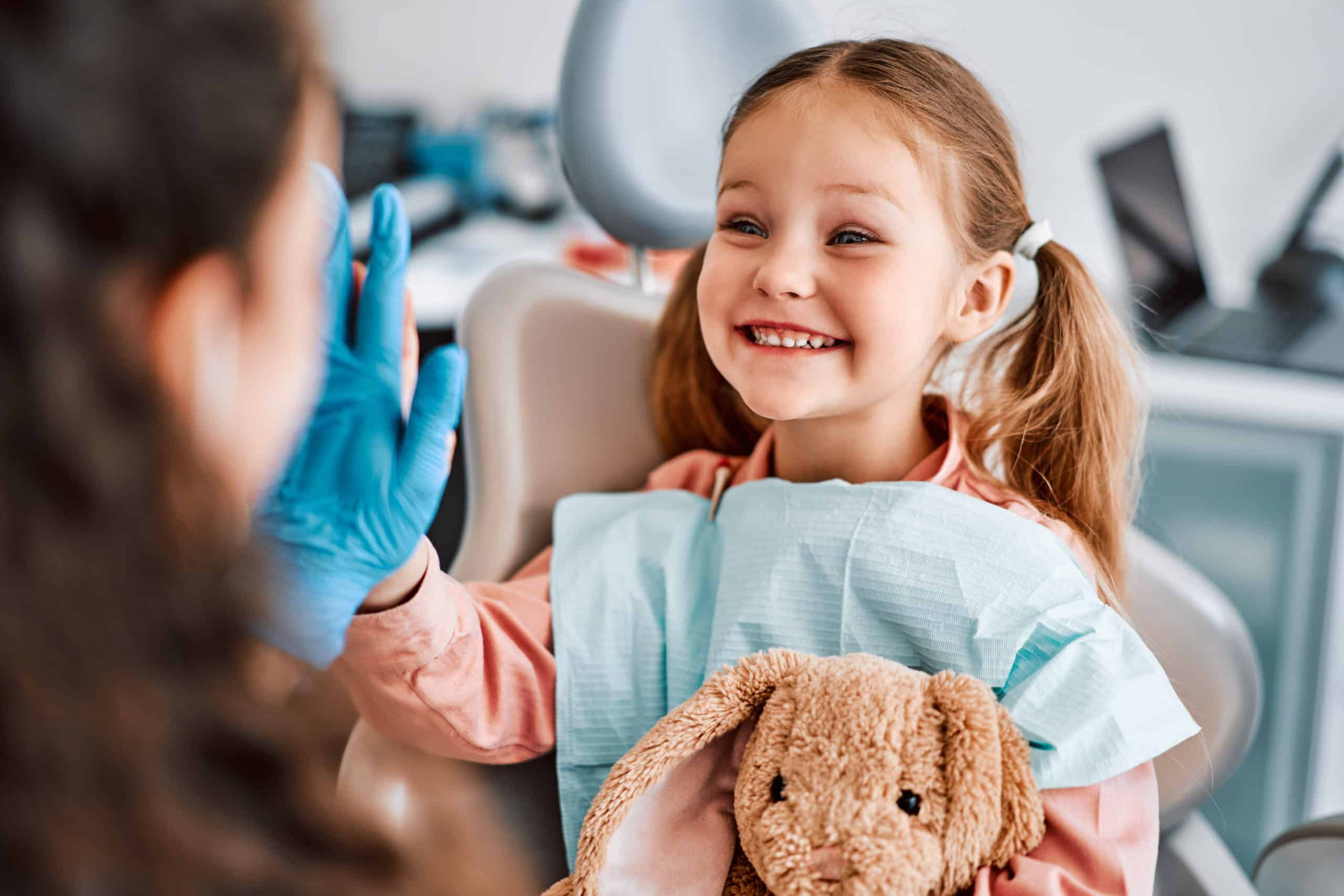
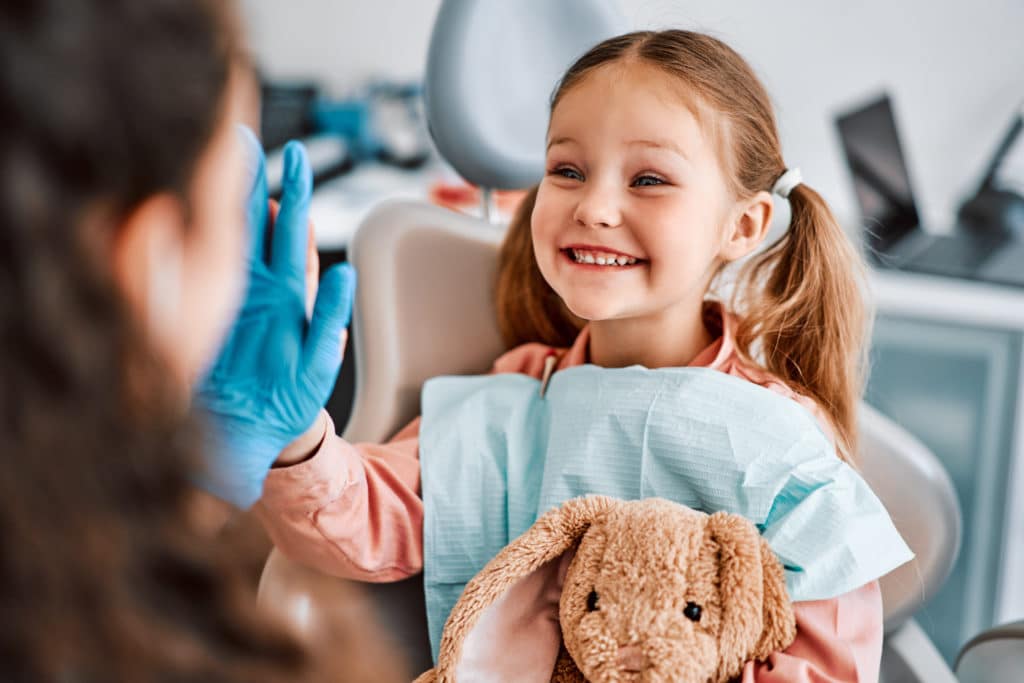
Heading into National Children’s Dental Health Month is a celebration that is held by the American Dental Association throughout the month of February specifically. This month-long national health observance not only helps parents by providing them with advice on how to keep their child’s smile in good shape, but it also serves to emphasize the significance of oral health awareness in youngsters. A number of our dentists and staff members at Children’s Dental Health are making use of this occasion to disseminate information regarding oral health and to bring attention to the significance of providing dental treatment to children at a young age.
An initial tooth, a first birthday, and a first visit to the dentist.
The question “When should my child first see a dentist?” is frequently asked by new parents. There is never a time when it is too early to begin focusing on the dental health of your child! It is recommended by the American Association of Pediatric Dentists that parents establish a dental home for their child by the time the child reaches their first birthday or when they have their first tooth. During this appointment, parents and guardians will have the opportunity to ask questions and address any dental problems that may arise during the primary visit. Additionally, the dentist will use a gentle swab to examine the child’s gums and any teeth that have erupted. The dentist will be able to monitor the child’s progress and take preventative steps for any issues that may arise with your baby’s teeth as the child begins the process of teething.
For the sake of the teeth
Due to the fact that they play a crucial part in preparing room for a child’s permanent teeth, baby teeth are of very high significance. They remain in a child’s mouth for eight to ten years, during which time they have an impact on the child’s ability to speak, chew, and, of course, smile. Additionally, a child’s overall health can be inferred from the color of their baby teeth. Oral infections that enter the bloodstream and lead to other major health problems can be caused by untreated tooth decay. These infections can also allow bacteria to spread to new adult teeth.
In spite of the fact that brushing the teeth on a regular basis is an essential component of a child’s oral hygiene practice, the germs that cause tooth decay can still be found between the teeth, outside of the reach of the toothbrush. With this in mind, it is of utmost significance to assist your children in incorporating flossing into their regular regimen.
Baby bottle teeth decay is a substantial dental health risk for newborns and young children under the age of one. This danger is especially prevalent in the United States. If your child drinks a sweet beverage, bacteria in their mouth will absorb the sugar and make acid. This will happen when your child experiences this. This acid affects the enamel on baby teeth, which can lead to tooth decay if it is exposed to it for an extended period of time. This problem is exacerbated by the consumption of liquids like as milk, formula, fruit juice, soda, and any other beverages that have added sugar. In the event that your child is required to sleep with a bottle, water is the most risk-free and secure choice available.
Parents, Are You Aware of This?
In recent years, tooth decay in children has emerged as the most prevalent chronic disease in children, affecting a greater number of children than asthma. More than forty percent of children have dental decay by the time they reach kindergarten, as stated by the American Dental Association (ADA). In addition, children who have poor oral health are three times more likely to leave school due to dental pain. This is because tooth pain is a common cause of absence.
As part of an effort to combat the oral health crisis that has been plaguing the state of Pennsylvania, the state has mandated that every kid must undergo a dental examination prior to enrolling in school, as well as during the third and seventh grades. On the other hand, if your child does not receive regular checkups every six months and does not begin developing appropriate oral health practices at a young age, even minor cavities can develop into far more serious issues in their mouths.
Advice on How to Keep Your Child’s Oral Health in Good Condition
Serving patients throughout such a crucial period of early development is something that our physicians take great delight in. For the purpose of working specifically with infants and children in the monitoring of early oral development, they have received additional training beyond what is required in dentistry school to become pediatric dentists. In order to get your children started on the path to a lifetime of good smiles, we suggest that you start them off with the following oral health instructions.
Make sure to schedule regular checkups. In the event that it has been more than six months since your child has visited a dentist, it is imperative that you make an appointment as soon as possible.
On a daily basis, clean your baby’s gums. After each feeding, use a damp washcloth to gently wipe the gums over the gums in order to remove any harmful bacteria that may be present until the teeth come in.
Beginning with the first tooth, begin brushing it. If you observe your baby coming in with an infant toothbrush, you should start brushing their teeth as soon as you could. Use a small amount of fluoride toothpaste, around the size of a grain of rice, along with water to clean your teeth.
Two minutes of brushing should be done twice a day. A pea-sized amount of fluoride toothpaste should be used by children between the ages of 2 and 6. When children younger than six years old are brushing their teeth, be sure to keep a close eye on them because they are more prone to swallow toothpaste.
Let’s start flossing. Begin flossing in between your child’s teeth as soon as they come into contact with one another.
A nutritious snack! The teeth of your child are at risk from a variety of foods and beverages, including fruit juice, sports drinks, fruit snacks, and sticky candies. Serve calcium-rich snacks to children, such as cheese or yogurt with a low sugar content. In the event that you are forced to consume candy, it is recommended that you choose a chocolate bar rather than gummy or sticky sweets, as they might become stuck in between the teeth even after cleaning them.
Make sure they stay hydrated! Instead of drinking sugary beverages, you should stick to drinking plain old water. Sugar and other particles that can cause cavities can be removed from the mouth with the help of water. Fluoride is a substance that is found in a great number of municipal water sources. It is suggested by a number of organizations, including the American Dental Association and the United States Surgeon General, as an effective method of preventing tooth decay. In point of fact, the celebration of a whole seventy-five year period of fluoridation of water is the focus of this year’s National Children’s Dental Health Month.
Every three to four months, you should replace the toothbrush that your child uses.
4 Ways to Make Brushing Fun for Kids
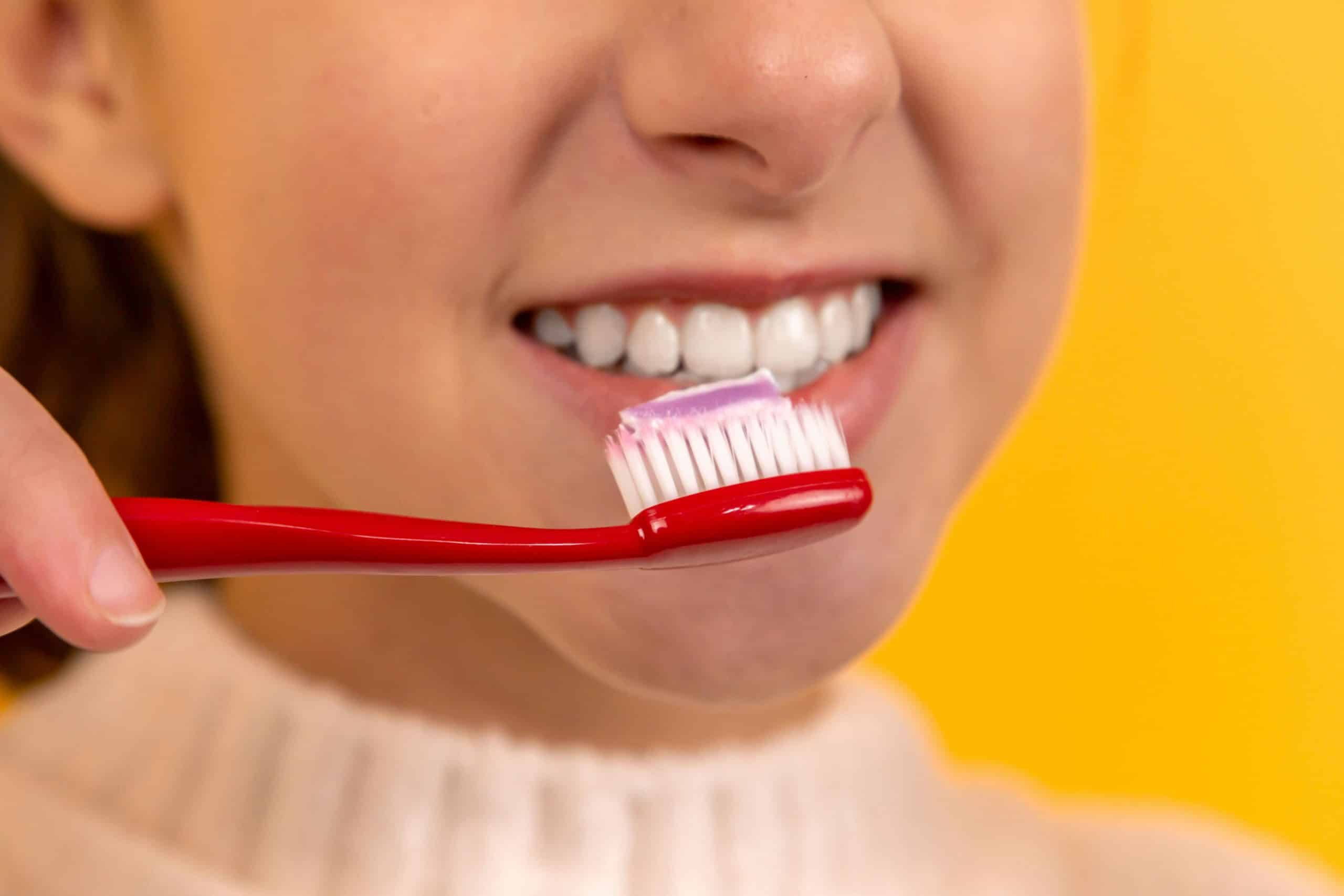
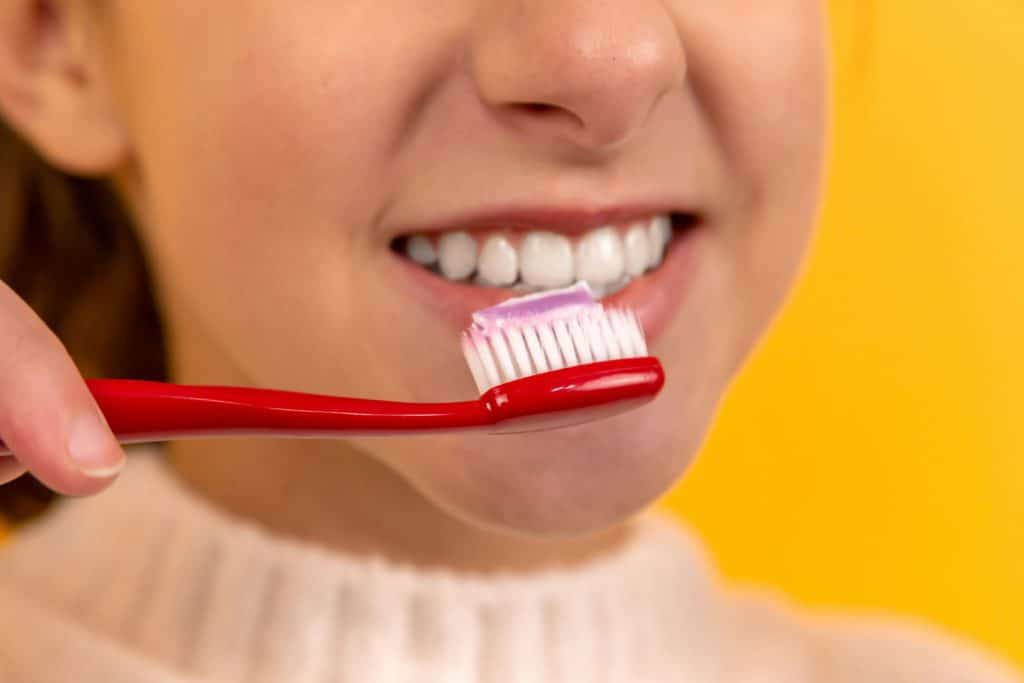
Teaching kids to brush their teeth is important to maintaining their dental health. However, we all know that standing there and brushing your teeth for two minutes is far from fun. Here are four ways to make brushing fun for kids of all ages and ways to help kids develop healthy brushing habits at a young age.
- Use Fun Toothpaste
Plenty of fun toothpaste flavors are out there, from bubble gum and strawberry to cinnamon and mint. If your child doesn’t like mint toothpaste, try buying a more fun flavor. These toothpastes come in fun colors like pink, and having tasty toothpaste can help make brushing a much more enjoyable experience.
Suppose your child is incredibly picky about flavor. In that case, you can also find fluoridated toothpaste that’s taste-neutral, so you don’t have to worry about finding a toothpaste they like the taste of. You can even try out other toothpaste styles, including tablets if your child doesn’t like the texture of normal toothpaste.
Remember, the goal is to get your child to learn to clean their teeth, so working with them to find a dental cleaning option that works for them can remove some of the struggles around brushing their teeth.
- Use Character Toothbrushes
Young children are more likely to want to brush their teeth if they have a fun, colorful toothbrush. You can get electric toothbrushes that have their favorite TV show characters on them or invest in sparkly glitter toothbrushes. Whatever kind of toothbrush they like best, that’s the best option for them. While you should pay attention to the type of toothbrush (and look for a soft, child-friendly design), getting character toothbrushes can be a great way to get children excited to brush their teeth.
- Use a Chore Chart with Stickers
Getting your child to brush their teeth twice daily can be a hassle. That’s why incentivizing your child to brush their teeth can be a great solution to kids avoiding dental cleaning. Making a chore chart with stickers or other rewards can incentivize your child to brush their teeth, teaching them lifelong habits that will help them maintain their teeth as they age.
You can also include different rewards, such as a trip to the park if they brush their teeth every day for a week or make brushing their teeth part of how they earn allowance. No matter how you incentivize it, giving your child a reason to be excited about brushing their teeth can turn a daily struggle into a reliable routine.
- Brush to Music
Brushing your teeth for two minutes twice a day can be a struggle for adults and children. One way to get your children into the habit of brushing for two minutes is to play fun music while they brush their teeth. Letting them listen to their favorite songs while brushing not only teaches them how long to brush their teeth but also gets them excited to brush their teeth. You can mix up what songs they listen to during the morning and evening and even rotate out some of their favorite songs, so brushing their teeth is always a fun experience.
If you’re looking for a fun, friendly pediatric dentist, call Smile First Pediatric Dentistry today at (631) 563-7462. We look forward to hearing from you.
Should Your Teen Still See a Pediatric Dentist?


Once your child reaches their teen years, you may wonder if a specific dentist exists for teens. Thankfully, just because your child is a teen doesn’t mean they need to find a new dentist. Most dentists recommend your child keep seeing their pediatric dentist well into their teenage years. The recommended age to switch from a pediatric dentist is 18. There are several reasons why your child should stick with a pediatric dentist, including continuity of care and familiarity with the team.
While teens are usually more used to going to the dentist than small children, they can still have some dental anxiety. This dental anxiety would likely increase if they had to switch to an adult dentist while in the sensitive teenage years. Thankfully, pediatric dentists are trained on how best to treat children of all ages, including those entering their adolescent years. By sticking with the same dental team, you keep things familiar for your child and ensure they get continual treatment without switching to a new, unfamiliar practice.
Keeping the same pediatric dentist can also help ensure your child gets the treatment they need during their teenage years. Teenagers usually need dental sealants and may require wisdom teeth removal. Their pediatric dentist can easily track these things, allowing your teen to get the most up-to-date treatments every time they visit the office. On top of this, teenagers are likely to consume sugary beverages, meaning frequent dental check-ups are needed to prevent cavities.
Even though your child is a teenager, you should still pay attention to their dental health. Getting twice-yearly dental cleanings is still important for dental patients of all ages, as it can prevent cavities and help identify other dental issues before they become serious. It would help if you encouraged your teen to brush their teeth twice daily and floss once daily. Alcohol-free mouthwash can also help reduce bad breath and keep your teen’s teeth healthy and happy.
While teenagers may not enjoy going to the dentist, you can help them feel more comfortable in the office by working with your pediatrician to give your teen some input on their dental health. Allowing them to choose the color of their brace bands, asking questions of the dentist, and keeping them appraised of what is happening can all show your teen you trust them and know they’re growing up. Of course, don’t be surprised if your teen still wants stickers or other prizes after their dental appointment: just because they are growing up doesn’t mean they can’t still enjoy small prizes after a stressful appointment!
If you’re looking for dentists for teens, contact Smile First Pediatric Dentistry. Our team of trained pediatric dentists can help ensure your teen gets the treatment they need. From standard check-ups to more intensive care, our office is there to help you keep your child healthy every step of the way. For more information or to schedule an appointment, contact us today at (631) 563-7462.
We look forward to hearing from you.
5 Common Dental Treatments for Kids and What to Expect


While many of the same dental treatments that apply to adult patients also apply to pediatric patients, there are some common dental treatments for kids that are often needed for their dental health. In this article, we cover five common dental treatments for kids and what to expect during these treatments.
Fluoride Treatment
Fluoride treatments are an essential part of your child’s dental treatment. These treatments apply fluoride to the surface of your child’s teeth. Fluoride is a crucial mineral for the growth of dental enamel. On top of this, fluoride helps prevent cavities, making it essential to your child’s overall dental health. Many dentists do fluoride treatments during your child’s routine cleaning visit. These treatments can help strengthen your child’s teeth and improve their dental health.
While your child can also get fluoride from a city or town water supply, routine fluoride treatments can strengthen their teeth. This makes them an essential common dental treatment for kids.
Cavity Filling
Cavity fillings are one of the most common dental procedures of all time. Dental caries, or cavities, happen when bacteria gather on the surface of your child’s teeth. This bacteria produces acid, which in turn eats away at the enamel. Once these cavities pass a certain threshold, they need treatment. Good dental hygiene can help repair some of the damage done by bacteria. However, when cavities get too deep, they require filling.
Dental fillings are a safe, reliable way to fix cavities. By fixing cavities, you can prevent further dental decay and keep the decay from reaching the root of your child’s teeth. Your child’s dentist can treat dental cavities by drilling away the decayed material, cleaning the remaining space, and filling the hole with dental filling material.
Braces
Braces are a common childhood dental treatment. This treatment gradually moves your child’s teeth into place, straightening out their smile. This treatment is usually done by an orthodontist, who fixes brackets and wires inside your child’s mouth. Through regular adjustment and time, braces move your child’s adult teeth. Children with all or most of their adult teeth can be good candidates for braces.
Dental Extractions
If your child has an infected or decayed tooth that cannot be repaired any other way, it may be time for a dental extraction. Your child’s dentist will recommend dental extraction if they can do nothing for the tooth or the tooth is too decayed for repair. Your child’s dentist will numb your child’s mouth using topical anesthetics before removing the tooth. Be sure to follow all dental recommendations during dental extraction recovery.
Dental Crowns
If the surface of your child’s tooth is decayed, damaged, or worn down, or they have a lot of cavities that need repair, they may need dental crowns. Dental crowns not only protect your child’s tooth, but they also act as a replacement chewing surface. To place a dental crown, your child’s dentist may need to remove some enamel or decayed dental matter to fit the crown. Then, the crown is bonded to the surface of the tooth.
If you have questions about kids’ dental treatments or want to schedule an appointment, contact Smile First Pediatric Dentistry at (631) 563-7462. We look forward to hearing from you.
